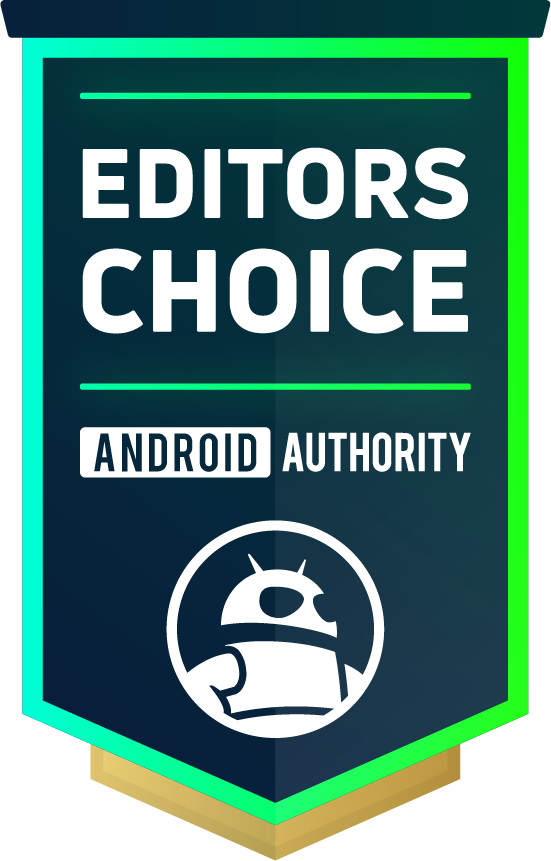
The Homey Pro Mini is less powerful than the regular Homey Pro, but don’t let that deceive you. For most people — especially those just beginning their smart home journey — this has more than enough power and features to make its 50% cheaper price tag over the Pro an absolute steal. Unless you have deep pockets or feel limited by the lowered RAM count, there is no reason to go for the Homey Pro over the Homey Pro Mini.
Let me be right up front: the Homey Pro (2023) is not only one of my favorite smart home devices, but one of my favorite devices, in general. In my life, very few tech products have had as profound an effect on my day-to-day existence. I’m saying this because I want you to understand my perspective towards the newest Homey-branded product: the Homey Pro Mini.
The Homey Pro Mini is a pared-down version of the Homey Pro — think of them like a Pixel 9a and a Pixel 9 Pro XL, respectively. The Mini sacrifices many features of the Homey Pro in an effort to fix the biggest barrier to entry: pricing.
I want to tell you all about what you’re sacrificing by getting a Mini over the regular Pro. But, most importantly, I want to tell you why the Homey Pro Mini is now the perfect device to start a smart home — even more so than the standard Pro model.
What even is a Homey?
If this is the first time you’re learning about Homey and Athom, the company behind it, I highly recommend reading my Homey Pro review from last year or watching my video review above. Very basically, though, a Homey device acts as a one-size-fits-all hub that lives at the center of your smart home — the one hub to rule them all.
Those of you who have dabbled in smart home stuff will know how much of a mess it is. There are multiple protocols (Wi-Fi, Zigbee, Z-Wave, Infrared, etc.) that don’t integrate well with one another, and thousands of brands that don’t play nice with all the others. On top of this, some products need a specific hub to function, causing you to have multiple hubs all around your home, each one taking up space and an outlet. To make things even worse, each device family has its own app, making an already confusing experience even more cumbersome.
A Homey device will act as the ‘brain’ of your smart home, making order out of the chaos that owning a smart home entails.
Athom wants to organize this chaos with its Homey products. The Homey Pro, for example, supports every major smart home protocol. It connects with tens of thousands of devices across hundreds of manufacturers. Using its incredibly well-designed software, you can make a smart home that’s actually smart, with one device connecting to and controlling everything through just one app. What’s more, you can even do this all locally, giving you total control over your privacy and security.
The most significant problem with the Homey Pro, though, is that it’s costly, starting at $399. This is far too much money for someone just beginning their smart home journey. This is made all the more problematic when you learn that a person who has already created an extensive smart home network likely has jumped to Home Assistant, which acts similarly to the Homey ecosystem but requires you to create a custom hub using an always-on computer you either build or retrofit. This leaves the Homey Pro in the unenviable position of being incredibly good at what it does, but also difficult for me to recommend to its intended audience.
The Homey Pro Mini, though, is here to pick up the users left behind by the Homey Pro.
Homey Pro Mini vs Homey Pro: How is it different?
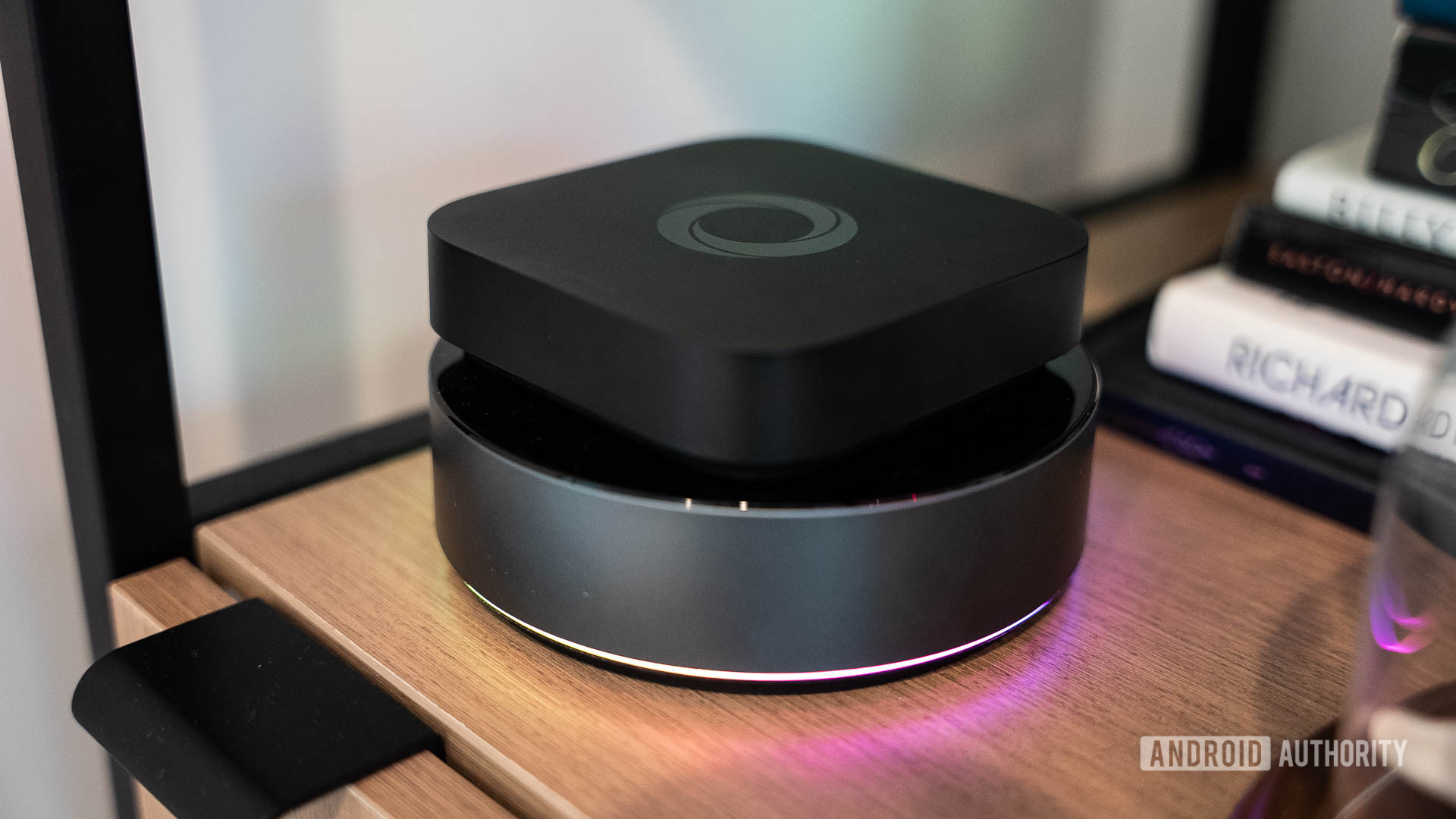
C. Scott Brown / Android Authority
The first and most obvious difference with the Homey Pro Mini is that it’s smaller than the regular Homey Pro. The Mini is a squircle-shaped black puck that’s about 50% more compact than the circular Homey Pro. For space-conscious smart home owners, this will be good news. Unfortunately, with that shrink in size, the Homey Pro Mini loses one of the best and most iconic aspects of the Homey Pro: its RGB lighting. I adore the light ring on my Homey Pro, so not seeing it on the Mini was disappointing.
Not all the physical differences are a drawback, though. Despite its smaller size, the Homey Pro Mini has a built-in Ethernet port, something the regular Homey Pro inexplicably lacks. To hardwire a standard Homey Pro to your home network, you must buy an adapter, which Athom sells separately. However, this is unnecessary with the Homey Pro Mini, as you can easily connect it directly to your network with the Ethernet cable included in the box (or any other you own).
The drawback here, though, is that the Homey Pro Mini doesn’t support Wi-Fi like the Homey Pro. This might be confusing, so let me clarify. The Homey Pro Mini cannot connect to your home network through Wi-Fi, but once connected to that network with an Ethernet cable, it can control Wi-Fi-connected smart home devices.
In addition to internet/cloud smart home products, Homey Pro Mini has radios for controlling Zigbee, Thread, and Matter devices. Out of the box, it will be able to control almost all your smart home objects that use those protocols. Unfortunately, this means it doesn’t have radios for Z-Wave, Bluetooth, 433MHz, and Infrared, so if you have devices that rely on those protocols, the Homey Pro Mini will not be able to control them. Thankfully, you can add support for these radios by connecting the Mini with a Homey Bridge, which is sold separately for $69.99. Even if you buy a Homey Pro Mini and a Bridge, you’ll still be spending a lot less than you would on a Homey Pro.
For a significantly reduced price, the Homey Pro Mini cuts included RAM in half and removes a litany of connectivity protocols.
As far as computing power is concerned, the Homey Pro and its Mini counterpart are similar. Both have the same 1.5GHz ARMv8 quad-core processor and 8GB of onboard, non-expandable storage. However, the Mini has 1GB of RAM — half as much as the regular Homey Pro. This will limit the number of apps you can run on a Homey Pro Mini.
Within the Homey ecosystem, you use downloaded apps to control your smart home devices. These can be official apps (i.e., made in concert with the manufacturer) or community apps created by other Homey users. Either way, each app takes up storage space on your Homey and requires a certain amount of RAM to function as an always-on service. With the 1GB of RAM in the Homey Pro Mini, you can run about 20 apps comfortably. This is a far cry from the 60 or so apps you can run on a Homey Pro with 2GB of RAM.
Although the Mini sounds anemic compared to the standard Pro, its limitations aren’t as bad as it might seem.
While 20 apps might not seem like a lot, it’s probably plenty for most people. I am only running 15 apps on my Homey Pro, for example, and my smart home is pretty elaborate with around 50 connected devices, a dozen virtual devices, and a handful of always-on services. According to Athom, the average Homey user only has 14 apps installed, so a 20-app limit should be fine for most.
Because the Homey Pro Mini lacks all these features, Athom dropped the price by 50% to $199. This is its greatest strength.
How is it similar to the Homey Pro?
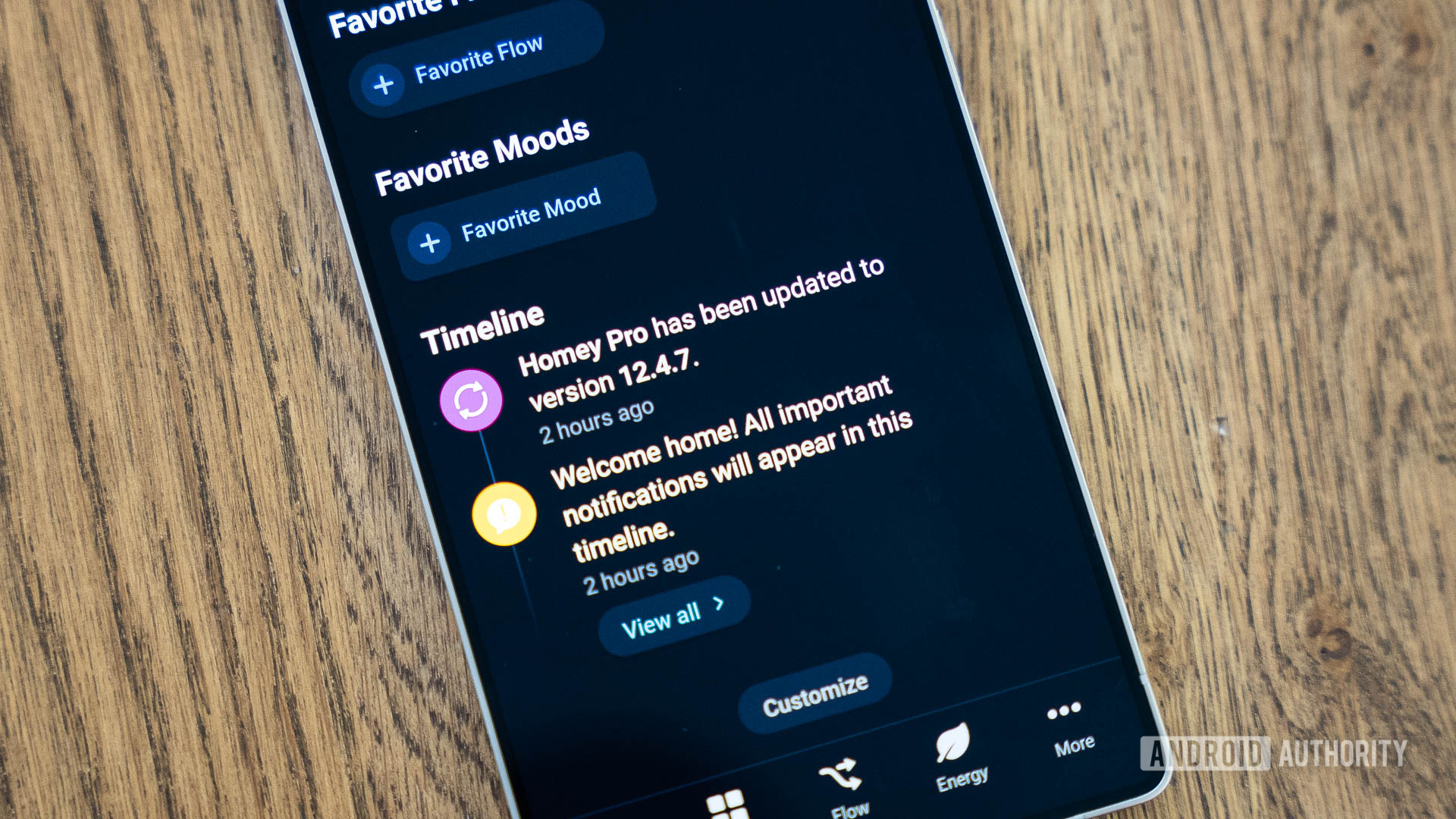
C. Scott Brown / Android Authority
The most important thing to remember when comparing these two devices is the name: Homey Pro Mini. The “Pro” moniker is essential because that’s what this product is. It is not a cloud-based Homey and will use the same apps as the 2023 Homey Pro. It’s best to imagine the Homey Pro Mini as a Homey Pro but with some of its features removed — but it’s still a Pro.
Although it’s a ‘Mini,’ don’t forget that it’s also a ‘Pro.’
Because of this, the experience using the Mini is remarkably similar to using the standard Pro model. The software is identical — in fact, the Homey app lists the Homey Pro Mini as a Homey Pro when it gets updates, so it literally is exactly the same (see photo above). That means you get access to all the Pro-level software features and do not need to pay any monthly fees. Also, assuming you have the appropriate devices for it, you can run your entire Homey smart home locally for enhanced privacy and security.
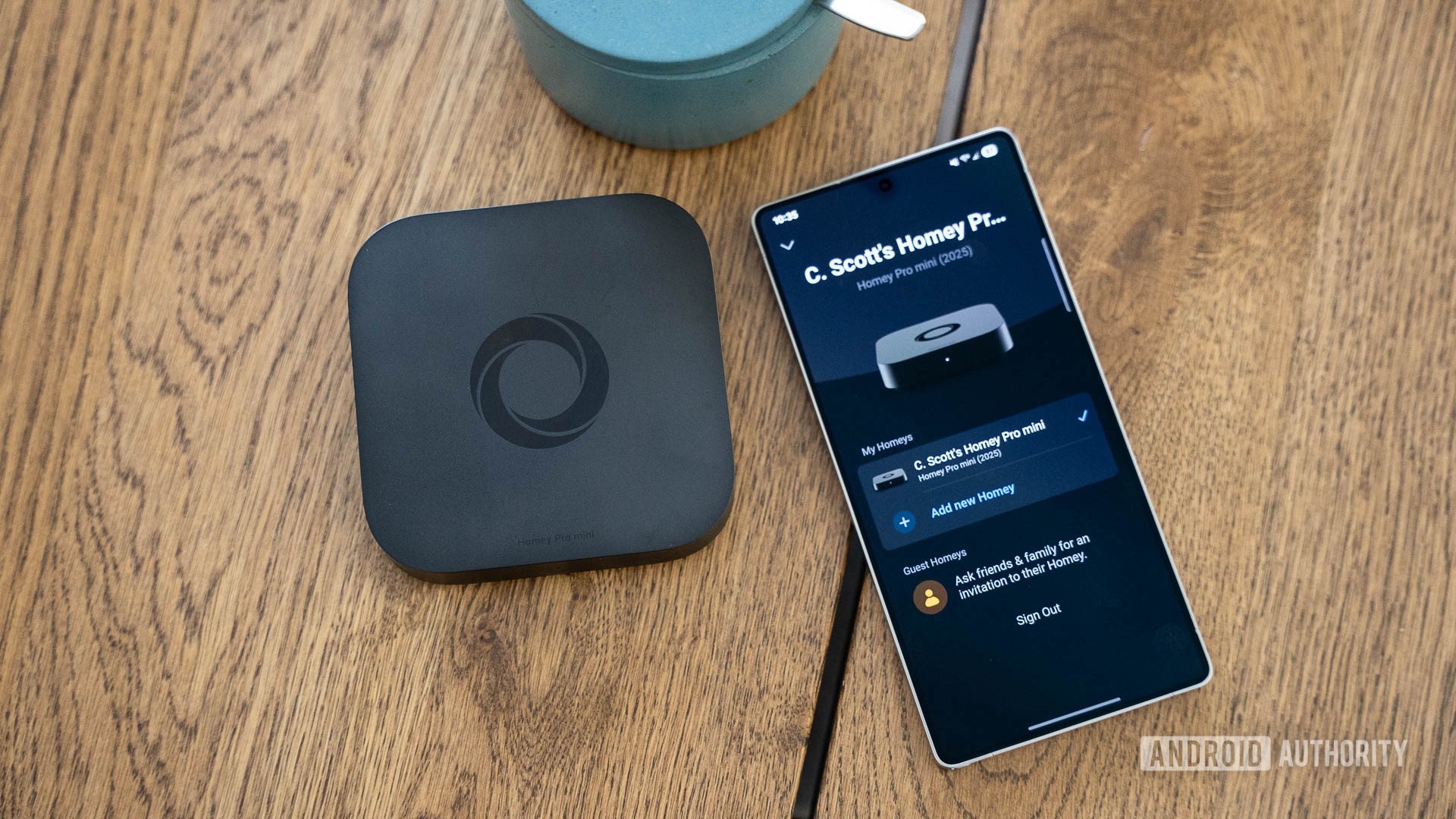
C. Scott Brown / Android Authority
The Homey Pro Mini also supports energy monitoring, standard Flows (Homey lingo for automation), Advanced Flows (using the desktop app only), and Homey Dashboards (similar to Home Assistant Dashboards; helpful in turning a tablet into a smart home control system). Essentially, anything a Homey Pro can do, the Homey Pro Mini can also do.
The Homey Pro Mini supports all the software features present on a Homey Pro.
This creates a new paradigm for buying a Homey. The only reason someone should fork over $400 for the Homey Pro now is that they are sure they will need more than 20 apps. The Homey Pro’s support for Wi-Fi connectivity is a moot point because anyone serious enough to spend $400 on a smart home device will use Ethernet anyway. On the same note, the Homey Pro’s wider selection of built-in connectivity protocols (Z-Wave, Bluetooth, 433MHz, etc.) can be easily replicated on the Mini by connecting one or more Homey Bridges. Connecting up to two Homey Bridges to a Homey Pro Mini is still cheaper than a Homey Pro by a not-insignificant $60. You could even buy a third Homey Bridge and still only be $10 over.
Really, the products are now so similar that I don’t think I would recommend the Homey Pro to anyone anymore. The Homey Pro Mini is now the best way to enter the Homey ecosystem.
Homey Pro Mini review verdict: I recommend this over a Homey Pro

C. Scott Brown / Android Authority
If someone were to tell me they were starting a smart home from scratch, I would immediately start singing the praises of my Homey Pro ($399 at Amazon). I’d tell them how it makes things so much more straightforward, everything from initial setup to organization to automation. I’d tell them how much I love creating Flows and how my home has never been more useful and convenient. In the end, though, I’d tell them not to bother buying a Homey Pro — at least, not yet.
The only reason I’d advise against this is the cost. For someone just starting out, $400 for a helpful but still inessential smart home product is untenable. How many initial smart home users will buy a few smart lights and then stop there? How many will try to automate their home, get frustrated, and give up? There are so many reasons why someone would dabble in smart home technology and never use or need anything that a Homey Pro offers.
The Homey Pro costing $400 makes it very difficult to recommend. But most of the same features for $200? That’s a much better deal.
Ah, but a $200 device that does mostly the same things? That’s much more reasonable. It’s still a lot for what is ostensibly a Raspberry Pi in an Apple TV-shaped box, but it isn’t nearly as difficult to swallow as its $400 counterpart. If someone is new to smart homes but is reasonably sure they will be very into it, the Homey Pro Mini is a great start.
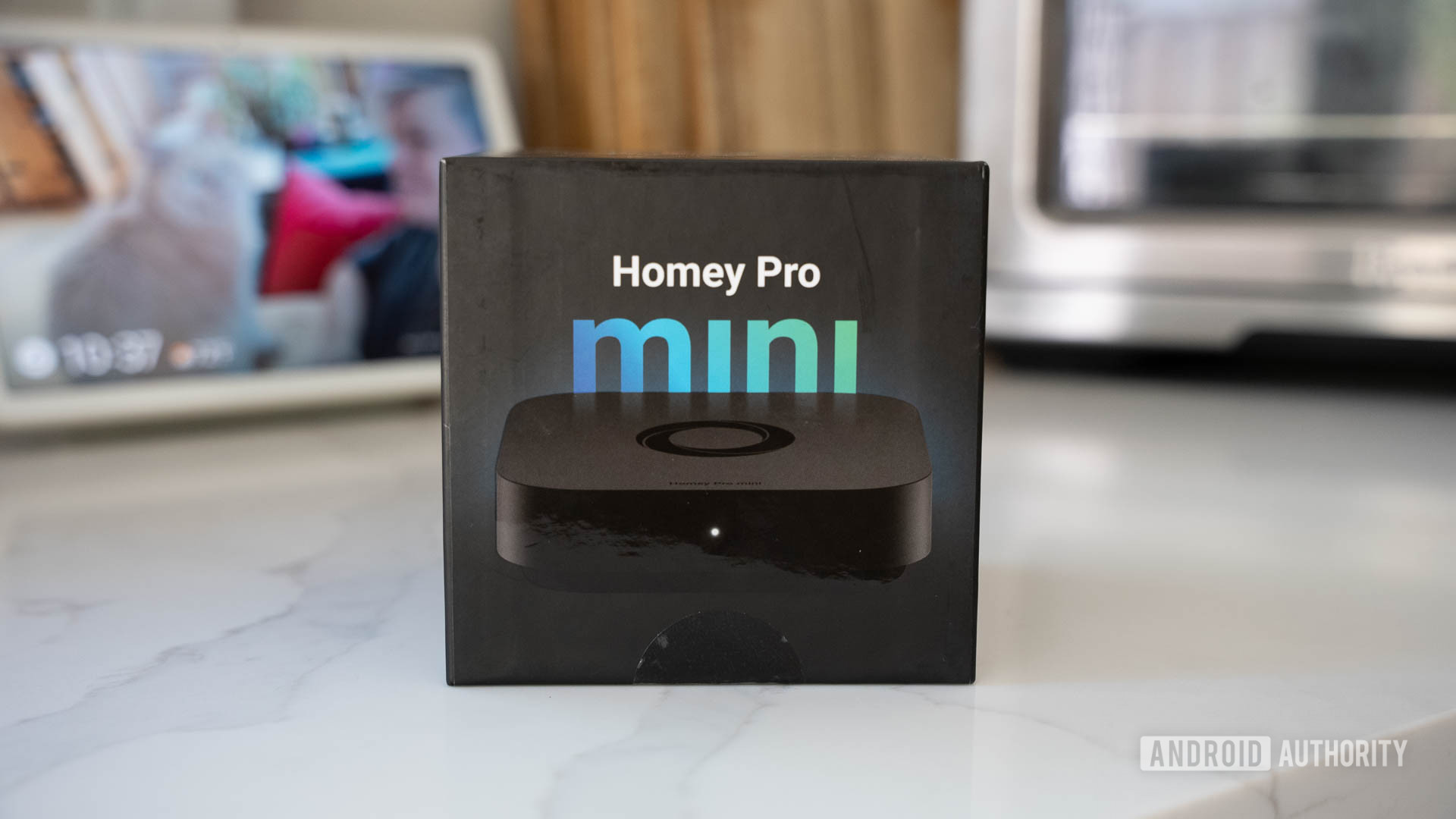
C. Scott Brown / Android Authority
I would also recommend the Homey Pro Mini to smart home veterans. As I mentioned earlier, most people who have established a smart home are already neck-deep in the Home Assistant ecosystem. For them, there’s nothing a Homey Pro offers that they can’t already do on their own for much less cash. However, someone just about to dive into Home Assistant might find Homey’s software easier to use (because it very much is), and not needing to build anything has a certain appeal as well. I’ve used both Home Assistant and Homey, and I would happily go for the latter over the former any day.
Really, the only people I would suggest the Homey Pro to now are those who have money to burn. In the future, I’d also recommend the Pro to people who own the Mini and are starting to find its limitations difficult. For everyone else, though, the Homey Pro Mini is more than adequate.
After testing out the Homey Pro Mini, the only reason I won’t permanently add it to my smart home is that Athom already sent me the Homey Pro. There’s no reason to have both, so I’ll stick with the one that allows for up to 60 apps and has RGB lighting. If I were shopping for a Homey, though, the Homey Pro Mini would be the version I would buy.
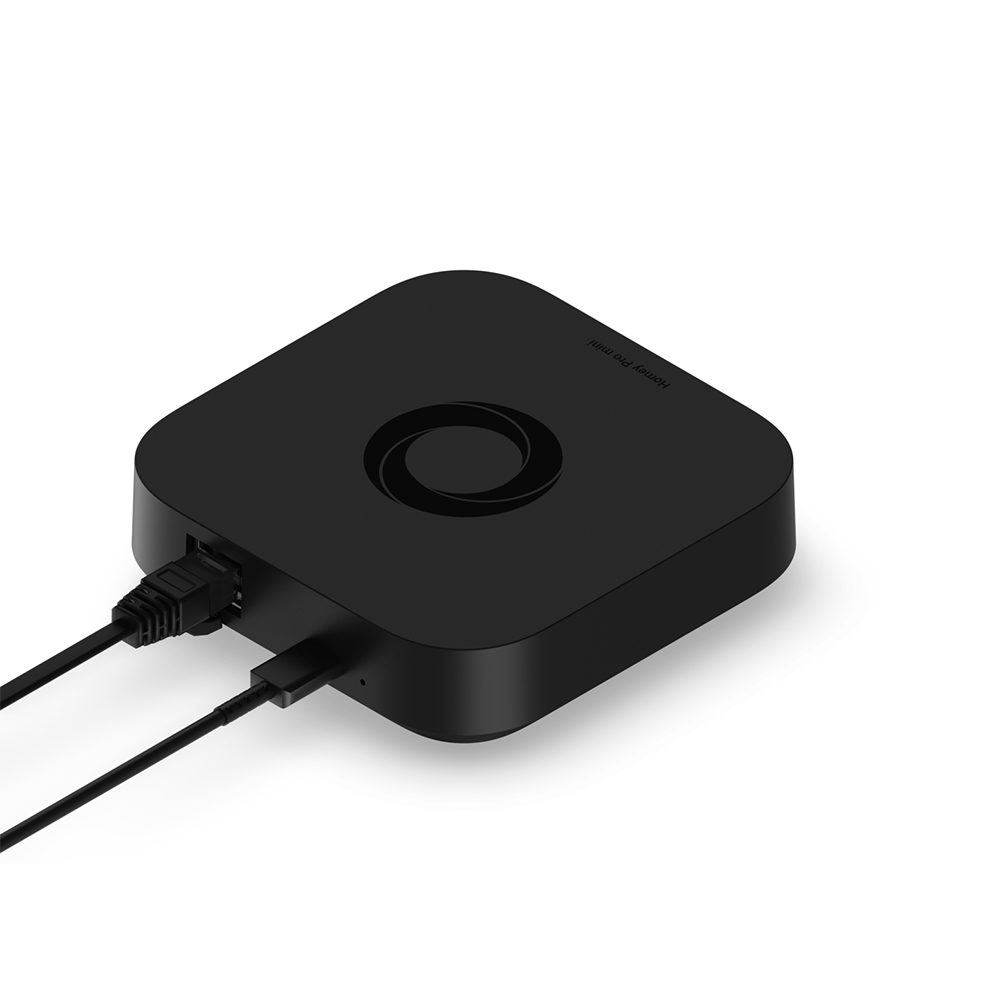

Homey Pro Mini
Supports all Homey Pro software features • Compact size • Built-in Ethernet port • Very competitive price
MSRP: $199.99
Nearly all the Homey Pro features in a Mini body with a Mini price
The Homey Pro Mini is physically smaller than the Homey Pro, has less RAM, and supports fewer smart home protocols. In exchange, it is 50% cheaper than the regular Pro model, making it an ideal starter device for smart home beginners.
Positives
- Supports all Homey Pro software features
- Compact size
- Built-in Ethernet port
- Very competitive price
Cons
- Half as much RAM as regular Pro
- Lacks support for some smart home protocols
- Must connect to network with Ethernet








